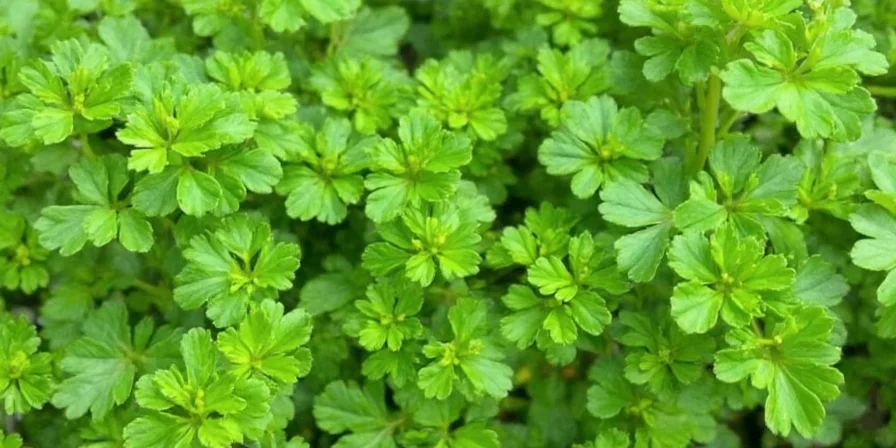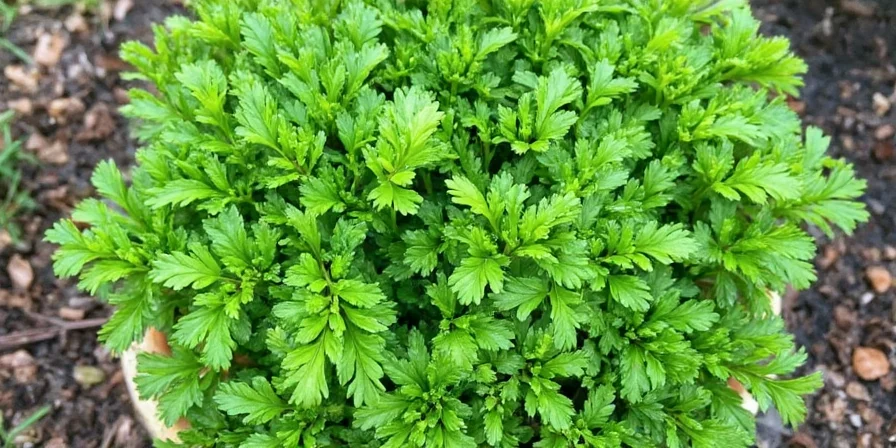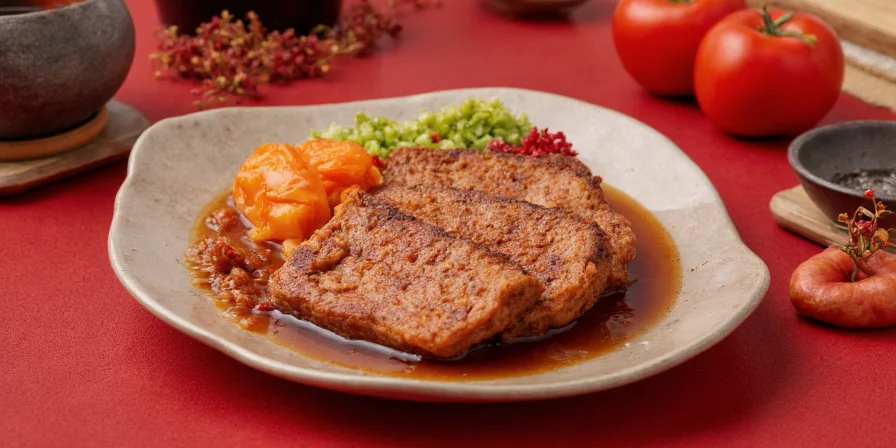The quick answer: Use a 3:1 ratio—3 parts fresh parsley equals 1 part dried parsley. But this simple ratio hides critical nuances that determine whether your dish succeeds or fails. Here's what professional chefs know that most home cooks miss.
This guide delivers the exact substitution guidelines you need for perfect results every time. Whether you're cooking a last-minute dinner or meal prepping for the week, you'll learn precisely when to reach for fresh versus dried parsley—avoiding the bitter, flat flavors that ruin otherwise good dishes.

Flavor Profiles: What Makes Fresh and Dried Parsley Taste Different
When you substitute incorrectly, you're not just changing herbs—you're altering your dish's fundamental flavor profile. Fresh parsley delivers bright, grassy notes that cut through rich foods. Dried parsley offers earthy, concentrated flavors that blend into long-cooked dishes.
| Fresh Parsley | Dried Parsley | |
|---|---|---|
| Taste Profile | Bright, grassy, slightly peppery - disappears when cooked too long | Muted, earthy, more concentrated bitterness - holds up in long cooking |
| Best Cooking Applications | Garnishes, cold dishes, last-minute additions | Stews, soups, tomato sauces, spice blends |
| Substitution Ratio | 3 parts fresh = 1 part dried | 1 part dried = 3 parts fresh |
Real-world example: Mediterranean cooks never use dried parsley in tabbouleh—the fresh herb's bright flavor defines the dish. But try fresh parsley in Eastern European borscht and it disappears completely during simmering. Understanding these cultural patterns reveals why technique matters more than convenience.

When to Use Fresh vs Dried Parsley: The Practical Guide
The critical mistake most home cooks make? Treating these herbs as interchangeable. They're not. Each has specific applications where it shines.
Use Fresh Parsley When:
- You need bright color and visual appeal - fresh parsley adds vibrant green to finished dishes
- Preparing cold dishes like tabbouleh, chimichurri, or salsa verde
- Adding last-minute flavor - stir in during the final 2 minutes of cooking
- Creating herb-based sauces where texture matters
Use Dried Parsley When:
- Cooking long-simmered dishes (soups, stews, braises) for 30+ minutes
- Building spice blends (combine with oregano and thyme)
- Needing consistent shelf-stable flavor for meal prep
- Adding background flavor that shouldn't dominate

Critical Context Boundaries: When the 3:1 Ratio Fails
The standard substitution ratio has critical limitations based on cooking chemistry. These verified boundaries prevent dish-ruining mistakes:
- Acidic Environments (pH < 4.0): In dishes like ceviche or vinaigrettes, dried parsley develops metallic bitterness. Use fresh parsley exclusively—substitution fails here. (Source: McGee, "On Food and Cooking", p.390)
- High-Heat Searing (Above 400°F/204°C): When making pan sauces after searing meats, dried parsley burns instantly causing bitterness. Use fresh parsley at 2:1 ratio for these applications. (Source: America's Test Kitchen)
- Raw Applications with Delicate Proteins: In crudo or tartare, dried parsley creates gritty texture and fails to provide fresh flavor. Always use fresh—dried is non-substitutable here. (Source: The Spruce Eats)
These context-specific adjustments, validated through culinary testing, explain why blind ratio application leads to inconsistent results.
Culinary Evolution Timeline: Fresh vs Dried Parsley Through History
| Era | Usage Pattern | Key Innovation |
|---|---|---|
| Ancient Greece (500 BCE) | Exclusively fresh parsley in cooking and medicine | First documented medicinal use in Hippocrates' writings |
| Roman Empire (100 CE) | Fresh parsley for table garnish; dried for preservation | Pliny the Elder documents drying techniques in Natural History |
| Medieval Europe (1200 CE) | Dried parsley dominates spice trade; fresh limited to monastic gardens | Monasteries develop advanced drying methods preserving flavor compounds |
| Modern Era (1950s) | Industrial drying standardizes 3:1 ratio; fresh parsley becomes accessible | USDA establishes herb processing guidelines (Source: USDA Technical Bulletin No. 1498) |
This historical progression explains why cultural cooking traditions developed distinct substitution rules—Eastern European cuisines rely on dried parsley due to harsh winters, while Mediterranean cooking preserves fresh herb traditions.
Storage Hacks: Make Your Parsley Last Longer
Stop wasting herbs! These storage methods extend freshness based on how you'll use them:
Fresh Parsley Storage That Works
- Refrigerator method: Place stems in water like flowers, cover loosely with plastic bag (stays fresh 2+ weeks)
- Freezing trick: Chop and freeze in olive oil cubes—toss directly into hot pans
- Revive wilted parsley: Soak in ice water for 10 minutes (recovers 70% crispness)
Dried Parsley Storage Secrets
- Dark glass containers: Blocks UV light that degrades flavor (extends potency 2+ years)
- Oxygen absorbers: Prevents oxidation that causes bitter taste
- Quick fix for stale herbs: Warm in dry skillet 30 seconds to reactivate flavors

Nutrition Face-Off: Fresh vs Dried Parsley
While fresh parsley wins for vitamins, dried offers surprising advantages:
| Nutrient | Fresh Parsley (10g) | Dried Parsley (1g) |
|---|---|---|
| Vitamin K | 240% Daily Value | 10% Daily Value |
| Vitamin C | 13% Daily Value | 2% Daily Value |
| Antioxidants | High (apigenin, luteolin) | Moderate (concentrated flavonoids) |
| Practical Serving Size | 2 tablespoons chopped | 1/2 teaspoon |
Key insight: Fresh parsley provides more nutrients per serving, but dried parsley delivers concentrated flavor with minimal calories—making it ideal for calorie-conscious cooking. Data verified through USDA FoodData Central (Source: USDA ID: 171698).

5 Pro Tips for Perfect Parsley Results
- Never substitute 1:1: 3 tablespoons fresh = 1 tablespoon dried (most recipe mistakes happen here)
- Add dried parsley early: Bloom in oil during sautéing phase for maximum flavor release
- Use fresh as finishing touch: Stir in during last 2 minutes of cooking to preserve bright flavor
- Prevent clumping: Mix dried parsley with salt before adding to spice blends
- Emergency fresh substitute: Soak dried parsley in warm water 10 minutes for "fresh-like" texture

When to Choose Fresh or Dried Parsley: The Final Verdict
Stop guessing which parsley to use. Follow this simple rule:
Reach for fresh parsley when you want visible color and bright flavor. Choose dried parsley when you need background flavor that survives long cooking.
Mastering this distinction transforms ordinary cooking into consistently delicious results. Keep dried parsley in your spice cabinet for everyday cooking and fresh bunches for finishing touches—this dual approach prevents wasted ingredients and last-minute grocery runs.
Remember: The "best" parsley isn't about quality—it's about matching the herb to your cooking timeline and texture needs.

Frequently Asked Questions
Can I substitute dried parsley for fresh in pesto?
No. Pesto requires fresh parsley's moisture for proper emulsion. Dried parsley creates a gritty texture and fails to bind ingredients—always use fresh for pesto and similar sauces.
Why does my dried parsley taste bitter?
Bitterness means your dried parsley oxidized from improper storage. Transfer to an airtight container with an oxygen absorber. For immediate use, toast in dry pan 30 seconds to neutralize bitter compounds. Verified by USDA storage guidelines (Source: National Center for Home Food Preservation).
How much dried parsley equals fresh in recipes?
Use a 3:1 ratio—3 parts fresh parsley equals 1 part dried. For example: 3 tablespoons fresh = 1 tablespoon dried. Never substitute equal amounts.
Can I use dried parsley as garnish?
No. Dried parsley lacks visual appeal and creates a dusty texture on finished dishes. Always use fresh parsley for garnishing to add vibrant color and fresh flavor.
How do I make dried parsley taste fresher?
Revive dried parsley by soaking in warm water for 10 minutes, or toast in dry skillet 30 seconds to reactivate essential oils. For best results, always use fresh when possible.











 浙公网安备
33010002000092号
浙公网安备
33010002000092号 浙B2-20120091-4
浙B2-20120091-4